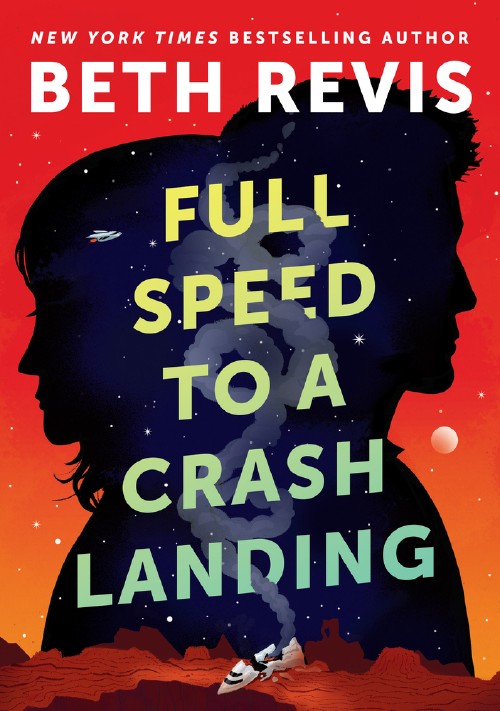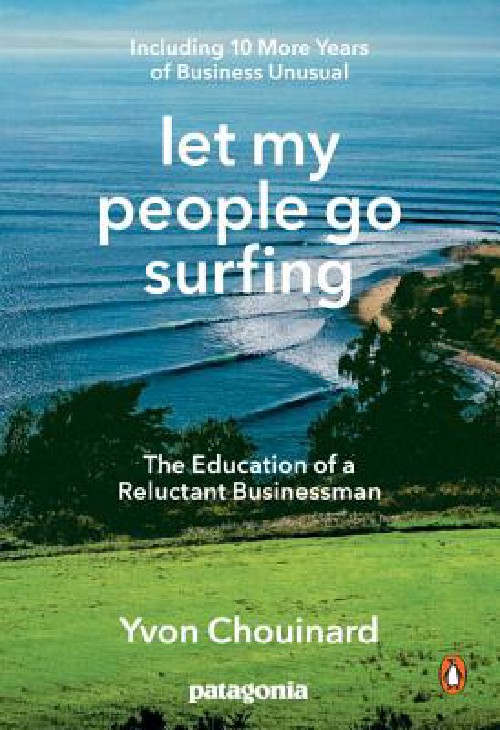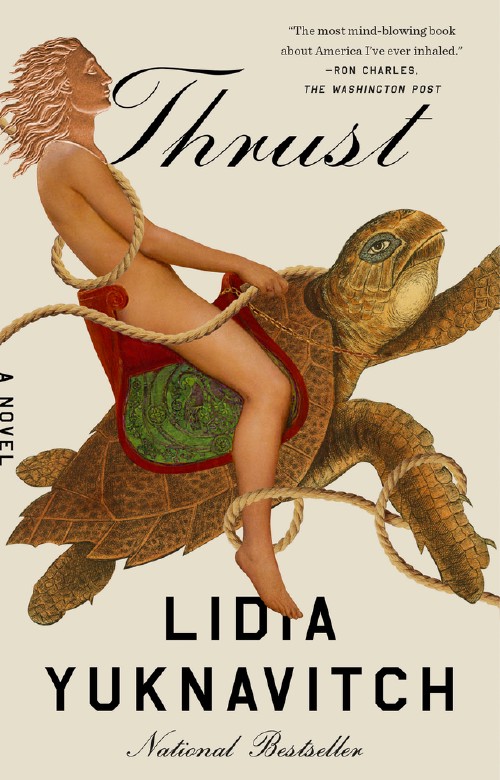The land that we call the Amazon Rainforest was not geographically fated to be such a lush ecosystem. Underneath the forest canopy, down below the understory, humus, and roots there is a lot of shitty, sandy soil that’s best suited for desert or grasslands. When Brazilians burn the forest to create new pastureland for sugarcane and cattle farming they are destroying everything the forest has built up to continually produce a layer of rich humus that covers the shitty soil. Within a decade of farming on post-rainforest land, the humus is exhausted and “unproductive,” when left fallow the land becomes a savannah rather than returning to forest.
Prior to this I would have assumed that the destruction of the above-ground parts of the forest would reveal riches on the ground: soil like white people were ecstatic to steal across Northern America. But no, the burning of the rainforest is stems from a desire to obtain the land that the forest is using “unproductively” in a capitalist sense and extract some value from it for a brief period of time.
The biological riches of the Amazon are made possible by the nutrients provided by the constant decomposition of its bountiful vegetation, not the thin layers of soil beneath the forest floor. Take away this vegetation, and the region’s topsoil dries and depletes quickly, requiring expensive systems of short-term life support and the constant creation of new land. Most pasture is degraded and abandoned within 10 or 15 years, meaning the industry’s existence (never mind its expansion) is predicated on a permanent cycle of destruction: More forest must always be cut to keep ahead of the processes triggered by the last cutting, which removed the soil’s natural source of nutrients. (The Intercept)
This is a rich metaphor for the future we are building. The Amazon is a self-sustaining ecosystem that supports a diversity of species unmatched the world over. When healthy, it generates its own weather, recycles its own waste, and creates space for millions of species to thrive as part of the broader community. For humans enmeshed in capitalism however, this is unproductive. This ecosystem does not meet the return-on-investment we need in our modern world. So we destroy it acre by acre with an unsustainable purpose that maximizes short-term gain.
This year in this newsletter I am thinking about what we might create when Late Capitalism becomes Post-Capitalism. There are no signs that this sunset era is anywhere close to ending, but even so, my curiosity is currently in the realm of what we might make that isn’t this. What will be the punchline on the t-shirt? “I burned it all down to create a better world and all I got was [???]” When Late Capitalism will die is a question I can’t answer, but for the next few months I’ll be rooting around for other possibilities because I find seeds in everything I read.
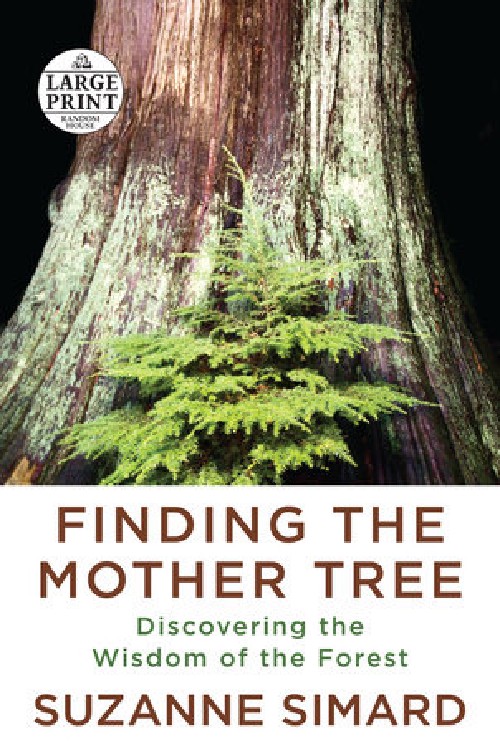
Finding the Mother Tree
Copyright 2021, Knopf
Climate Change, Cultural Analysis
What if the future is dirt-y? Dirt-ish? Dirt-like? Specifically I see a lot to admire and replicate in humus, the thick, dark, nutrient-rich layer of soil that plants, insects, and fungus are actively generating to support the ongoing life of the forest. Biologists and naturalists have spent the past few decades of scientific exploration exploring these creative relationships and their findings are illuminating. Suzanne Simard’s memoir Finding the Mother Tree is one of the books exploring these decades of scientific experimentation and it’s helpful because it contextualizes her questions and experiments inside the broader world of forestry science. Our modern economy is built on timber—buildings, furnishings, paper—so the past centuries have seen men obsessed with finding ways to get trees to grow in healthy, predictable ways that serve our growing economy well. They have pursued these obsessions by quite literally ignoring the forest for the trees. Simard recounts a personal history of slowly trying to understand the other beings in forests despite immense resistance from institutionalized powers. Her guiding question: why are forests that develop without human intervention so much healthier than forests grown with a century-plus of human “expertise”?
What she and the many others exploring this question have found is that a healthy forest is a community of many species working together in a resilient, dynamic network of care. Trees and mycorrhizal fungi create cross-species networks; sharing nutrients, supporting each other in different developmental periods, even warning neighbors of threats. The men who tried to improve forests through human management ignored all evidence of these communities and prioritized human goals of orderliness and mono-species forests, planting only the trees they cared about and preventing any other species through clear-cutting, razing, and heavy chemical applications. What they have created are not forests but commodity crops that deplete any resources in the soil within a generation while being incapable of supporting any other beings that previously lived on the land. Simard’s experiments were some of the first to empirically prove that trees thrive most in mixed-age, multi-species communities, despite it being rather clear to anyone who paid attention (as indigenous people have for millennia).
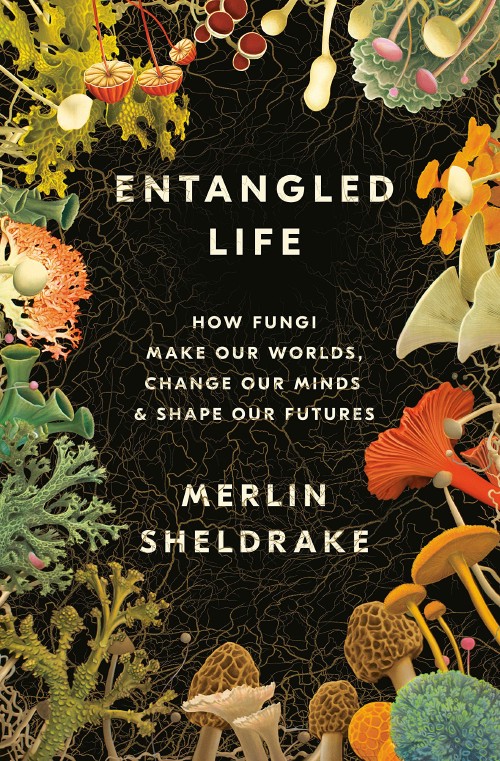
Entangled Life
Copyright 2020, Random House
Climate Change
Forests—when they can avoid man’s meddling destruction—support an immense variety of life through the relationships of care that develop over time. While there are many actors, it seems like the core network builders are fungi, which are the subject of Merlin Sheldrake’s delightful book Entangled Life. Planet earth contains millions of species of fungi and a significant number of them creatively seek out ways to live symbiotically with other species. Fungi are experimental, dynamic, adaptable, and consummate relationship builders. Ecosystems the world over have fungi at their foundations, and yet there is so little we understand about them because they are brilliant at not drawing attention to themselves—so they have long been ignored. Sheldrake is interested in how much we can learn from the little we already know; he expects that as our knowledge about how fungi operate in the world expands, our ideas of how the worlds we build can work will similarly expand.
As the title might suggest, Sheldrake is focused on how fungi upend our ideas of capital-N Nature being a place of ruthless competition for survival. Instead he explores a world that relies extensively on symbiosis and collaboration to evolve and flourish. Lichens are a key example in the book. Lichens are a symbiotic organism comprised of a fungus and an algae. Each component is incapable of surviving without its partner, but together they create an organism that has more capabilities than the combination might suggest. Lichens, Sheldrake points out, are excellent examples of “emergent properties” which is Systems Thinking language for capabilities that can only be produced when necessary ingredients are combined. Emergent properties are everywhere; flour, water, and yeast do not in themselves have the ability to create bread. But combining them allows for properties to emerge, especially if heat is added! In the case of lichens, the fungus and the algae combine to make organisms that can digest rocks, live off of minimal sunlight, and generally make themselves a comfortable home in what might otherwise be rather inhospitable conditions. This is what fungus seems to be excellent at; developing symbiotic relationships with other beings, to take the varying capabilities of every community member and use them to create a world—or at least a small place on this world—where the community can flourish within what resources are available to them.
That the healthiest forests literally have symbiotic relationships at their roots does not seem like simply a convenient metaphor. I am starting to believe this is a foundational requirement for creating systems that have space for all participants to thrive. This feels like a principle the trees have organized around and propose to those who would pay attention.
For a century or more scientific rationalist ways of seeing the world have built out a narrative of natural selection based on survival of the fittest: the weak will be culled and the world will be stronger. This narrative deviated from—though developed out of—the prior reigning narrative in Western culture from Christianity: all life was created by God, and the earth was a fallen sinful place that humans were cursed to live on and toil until death when they might be saved. Both of these grand narratives preclude so many possibilities about life because they start with a lens that life has a goal. In both narratives, there is winning (survival of the species; salvation) and losing (extinction; damnation). The knowledge that recent science is building about forests, fungi, and many other domains of life challenge both of these narratives. Indigenous cultures the world over have long had very different stories about the world, created many different ways of arranging human lives based on them, but colonization driven by the above narratives led white people to try and push those knowledges to extinction, orienting all of life around survival of the fittest.
What would it look like if we considered symbiotic relationships the necessary root of a thriving system? What if we did not presume that we could know in advance the goals of life—if we did not have a grand narrative that defined winning and losing by default? What if instead we built systems premised on letting as much life as possible flourish, so that many different goals could co-exist in the system?
I think—to take seriously the ideas proposed by forests—we have to figure out what the most critical components of a healthy system are, and organize our communities around ensuring there is a constantly replenishing stock of those components. Healthy forests are dependent on humus; and so trees and fungus work to ensure this is sustainably created constantly; through leaves falling and decomposing, through insects, bacteria, and fungus invited into the community and given space to thrive, through embracing the geographical features of the forest’s location so that local weather patterns are helpful more than harmful.
Human survival is not so directly dependent on humus, but we are dependent on what is often called care work. What I mean by “care work” is the labor that we have to do to ensure we stay alive. Growing and gathering food; cooking; cleaning; raising children; tending to those who are ill; I could keep going but you’ll notice (as the feminist literature has long pointed out), care work often is what we culturally consider “feminine” work; the responsibilities of people who are assumed to be women. Because of the patriarchy, this labor has historically been under-valued monetarily (done for poverty wages, or by a household member who does not make any monetary wages), and our entire modern economy emerged from systems premised on this work continuing to being done on these terms. Emma Dowling’s book The Care Crisis explores this history well, establishing the ways this is not merely an individual or household issue, but a problem at all levels of institutions. She shows how critical care work is to the continuation of the status quo while also showing that the status quo is dependent on under-valuing it. Centering care work and valuing it honestly would be radically disruptive to our systems.
Two other books speak to the necessity of this change, one working from the premise that the current systems can be reformed, the other suggesting that our current world lacks the capacity to change in ways that we need.
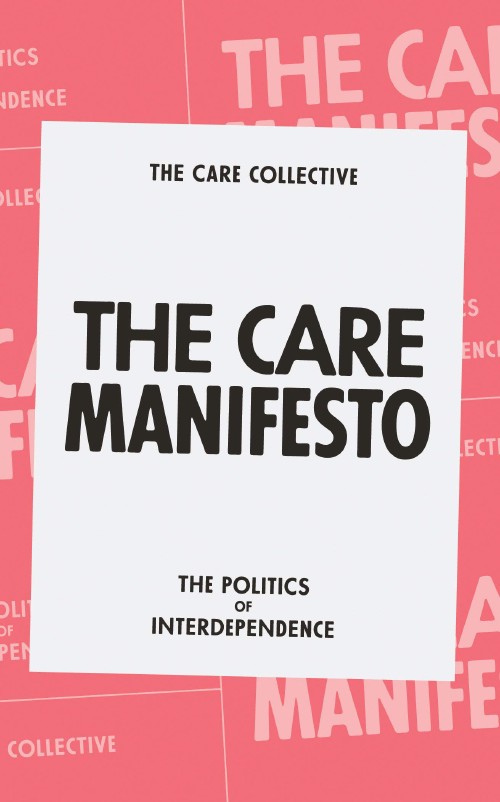
The Care Manifesto
Copyright 2020, Verso
Cultural Analysis
In the Care Collective’s small book The Care Manifesto, they suggest that interdependence can be recognized in our politics and we can embrace a radical generosity in our politics. Their argument captures the many levels of current institutions that intentionally under-value care work, but they are convinced that this is a choice our politicians and decision makers have made, and that other choices are available. This may or may not be true; the book is a manifesto not a policy plan, but implicit in this view is the idea that the de-valuing of care work is an optional aspect of our current systems of government and economics. What I wonder, and wish were addressed more, is the consideration that so much of the world today are emergent properties from historical systems premised on the devaluing of care work. Can we change such a fundamental aspect of the system while preserving its existence? Do we want to?
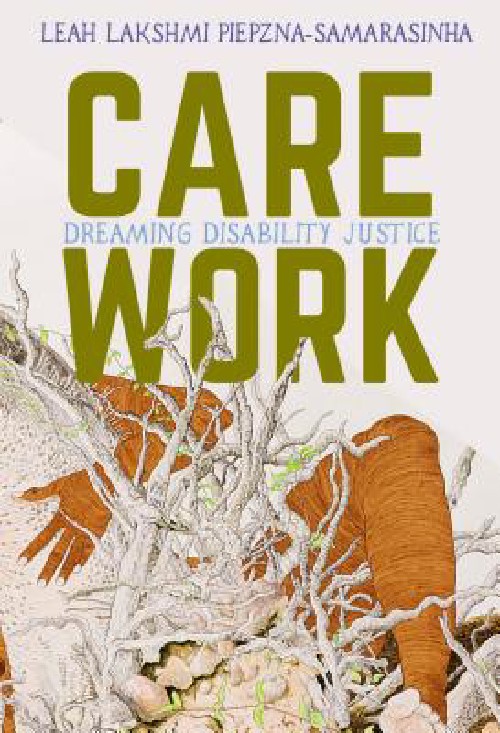
Care Work
Copyright 2018, Arsenal Pulp
Disability Theory
My questions here are greatly informed by the work of the disability community which has done so much to build the case against the current world at all levels. Disabled people’s perspectives—specifically queer, black and brown disabled people’s feminist analysis—recognize that our current world is resistant to all changes that would give us space to experiment towards multiple different futures. This theme is present in so many works from disabled perspectives but for this essay I revisited Leah Lakshmi Piepzna-Samarasinha’s Care Work: Dreaming Disability Justice, which blends memoir, theory, and manifesto to argue that better futures are possible, but we’re going to have to do a lot of creative destruction to open up the pathways. They write a vision that I find inviting:
I am dreaming the biggest disabled dream of my life—dreaming not just of a revolutionary movement in which we are not abandoned but of a movement in which we lead the way. With all of our crazy, adaptive-deviced, loving kinship and commitment to each other, we will leave no one behind as we roll, limp, stim, sign, and move in a million ways towards cocreating the decolonial living future.
For me, care work is the starting point of building whatever the human version of humus is. Care work is how we build relationships and communities, it’s how we create intimacies that make it safer to have needs, which can allow us to find ways to mutually support each other. Care Work is helpful because it names how messy this work can be: human relationships are not easy or simple; trust is not scalable. We are beginning to pay attention to and learn how all the beings outside of humans have collaborated and experimented their ways into symbiosis; into ways of living that create opportunities for as many members of the system as possible. These natural systems prioritize collaboration; reward symbiosis; flourish in diversity.
Unfortunately, the world that white people have spent the past few centuries building may not be capable of integrating these lessons. We have chosen thousands of paths that make the same assumption those who are burning the Amazon make: there will always be more where that came from. As time marches on and we continue to refuse to make the global changes necessary for addressing the climate crisis this way of thinking becomes ever more fatal. This planet—an ecosystem of ecosystems—is responding to our lack of care. As we push things ever out of balance—exhausting every resource we find as rapidly as possible—the planet moves to restore balance. This is ultimately what the climate crisis is; a planet-scale system moving towards equilibrium after certain large-scale (human-caused) changes. The question in front of us is do we care more about preserving what we’ve built because it serves certain people very well, or do we care more about, well, caring for all life on the planet?
Right now the systems and institutions humans built have locked us in to futures of destroyed ecosystems, continued extraction, and fewer opportunities to experiment. These systems were built up on a foundation of colonialism, ableism, sexism, eugenics, and more. It is possible that reform is available if we make better choices, but the people who the system currently harms have a very strong case that to remove these foundational parts of the system is to destroy it. Whether or not we can muster up the courage to do that sure is an open question. And yet—until we fully curtail all possibilities via our own extinction—the possibility always remains for us to fall in-line with millions of other species that make home on earth; learning to live within the resources available to us and recognizing that flourishing must be broadly distributed in order for it to be sustainable.

